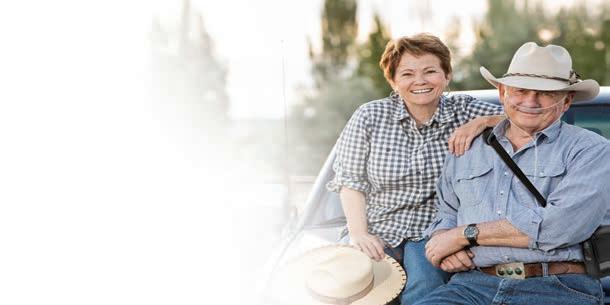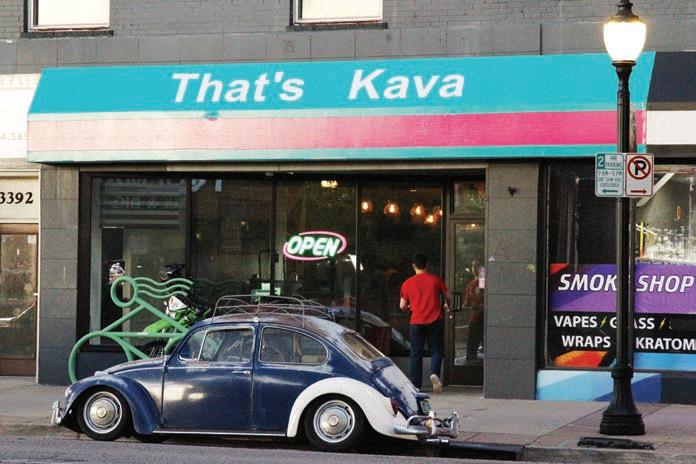
4 minute read
‘Alcohol alternatives’ and community aid
BY RACHEL LORENZ SPECIAL TO COLORADO COMMUNITY MEDIA
Whether it’s shooting pool or bowling with friends, one Colorado business owner noticed it’s hard to go out in the evening and not end up near folks drinking.
“All of our social time is all spent around alcohol,” Ryan Gnieski told Colorado Community Media. “ ere’s got to be something better than that, you know? We o er that alternative.”
Gnieski recently opened at’s Kava, a bar that serves kava and other nonalcoholic beverages, on South Broadway in Englewood.
Kava is a tea-like drink made from the root of a plant in the pepper family, found in the South Paci c islands. Served cold in a small bowl that mimics a coconut shell, kava has a relaxing e ect but doesn’t a ect your motor skills, Gnieski said.
FROM PAGE 1 teach in the future.
While many people retire in their 60s, some live well beyond retirement, Button said. Many will also continue working, but don’t have a direction on how to use their skills without working full-time, Button said.
“Many people feel there’s a lot more productive time left,” Button said. “People at 60 really could have your shoulders, makes you a little more talkative — but it doesn’t impair your judgment,” said Samuel Annes, the administrative operations manager at at’s Kava.
With a bright pink and blue color palette and a 10-foot marlin above the bar, the new hangout spot exudes a Florida vibe. at’s an homage to the state where Gnieski grew up and rst learned about kava nearly two decades ago.
In addition to kava, the new busi- three decades left of productive years.” e Change Makers program graduated its rst class of 17 students in the spring, including Matuszewicz. e program, which costs about $3,200, has students meet two nights a week over four months. Students can audit classes, re ect on their accomplishments, and hear from guest speakers on topics such as aging, social-emotional health, and volunteering. e program culminates in participants writing a 90-day plan on how to transition into their next job, wind drinks containing kratom, a Southeast Asian plant known for its stimulantlike e ects. ere’s a pool table in the back, and while there isn’t any food on the menu, Gnieski encourages people to bring in a snack from one of the neighboring eateries.
“With kava, it’s all about community,” he said. “I’m just about bringing people together.” at’s Kava is registered as a nonpro t corporation with the State of Colorado. Gnieski, who also founded down their careers, or nd another purpose.
Terri Harrington, 66, said she’s tried to come up with a plan for what’s next. e program didn’t inspire a great epiphany for her, but allowed her to map out how she would begin to slow down.
“It set aside time for me to think about it,” she said. “ ey also had us do di erent projects like look back on your life and chart out the signicant events.”
One of her happiest memories is cooking at the family farm in Nebraska, and she said that helped her realize how much she wants family to play a role in her retirement. Harrington said she wants to still work as an attorney, but also spend more time helping with her granddaughters and contribute occasionally at the family farm in Nebraska.

“I can spend more time there and spend more time with my family,” she said “I can work as little or as much as I want.”
For Matuszewicz, the class inspired him to try to nd exibility in a kava bar in Lakewood and owns a trading card game store in South Florida, said the money at’s Kava earns will go back towards operating expenses. Any extra will be used to help local charities and organizations in the community. He envisions picking out four or ve Englewood groups each quarter and letting his customers vote on which should receive the business’s surplus. at’s Kava, decorated with balloons and streamers, celebrated its grand opening June 17 by staying open for over 24 hours. e event included party food, a photobooth, a ra e and drink specials. Just before 8 p.m., two rattan chairs and a little love seat were moved out to make room for the live DJ that took the chill vibe of the packed bar up a notch or two. his work schedule while still using the skills he’s acquired.

“We’re just trying to o er alcohol alternatives while trying to help out local communities,” Gnieski said of his latest endeavor.
Normally the music’s kept at a low volume and the atmosphere is relaxed, Gnieski had said earlier.
But they only have one grand opening, Annes conceded with a smile as he surveyed the lively scene.
His goal is to step away from making signs and start a nonpro t that helps preserve Denver’s historic neon signs. e change would mean less hard labor, but would allow him to still be connected to the neon sign work he loves.
“I’m hoping to transition into more of the public face of it,” he said.
Matuszewicz plans to submit a grant proposal to the National Trust for Historic Preservation to help him start his nonpro t. He has plenty of work ahead of him guring out how many neon signs need to be saved in the Denver area. He wants to ensure neon sign makers continue the tradition — he estimates there are only six sign makers in Denver — and that the city can keep its history.
It’s a busy but ful lling retirement plan, Matuszewicz said. And he’s happy pickleball isn’t a part of it.
Chalkbeat is a nonpro t news site covering educational change in public schools.









